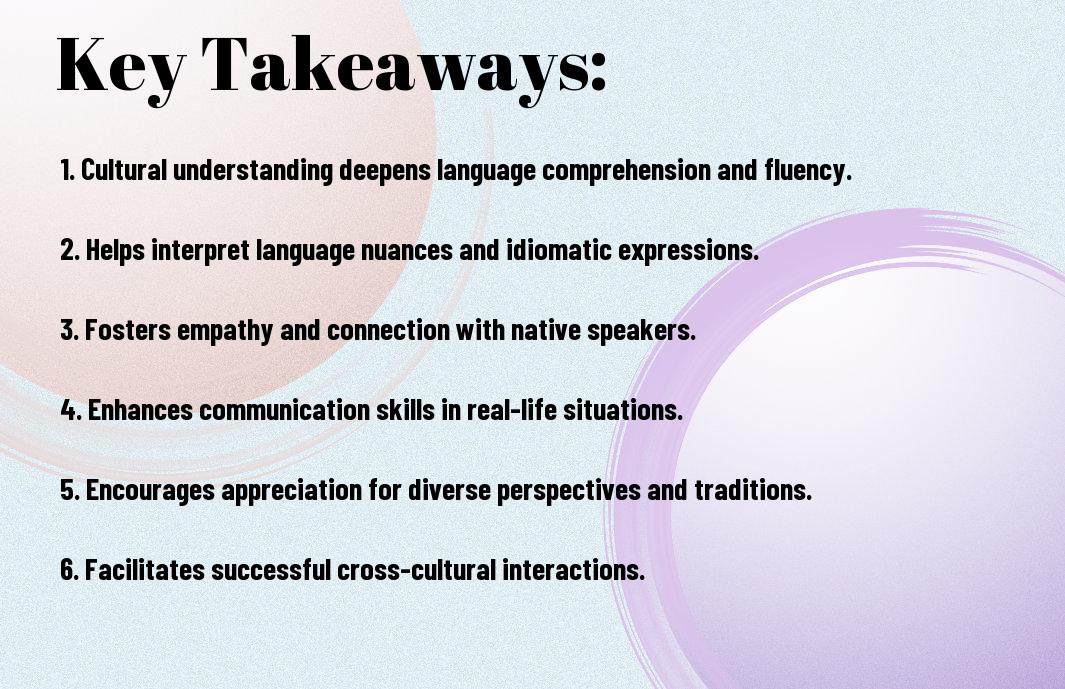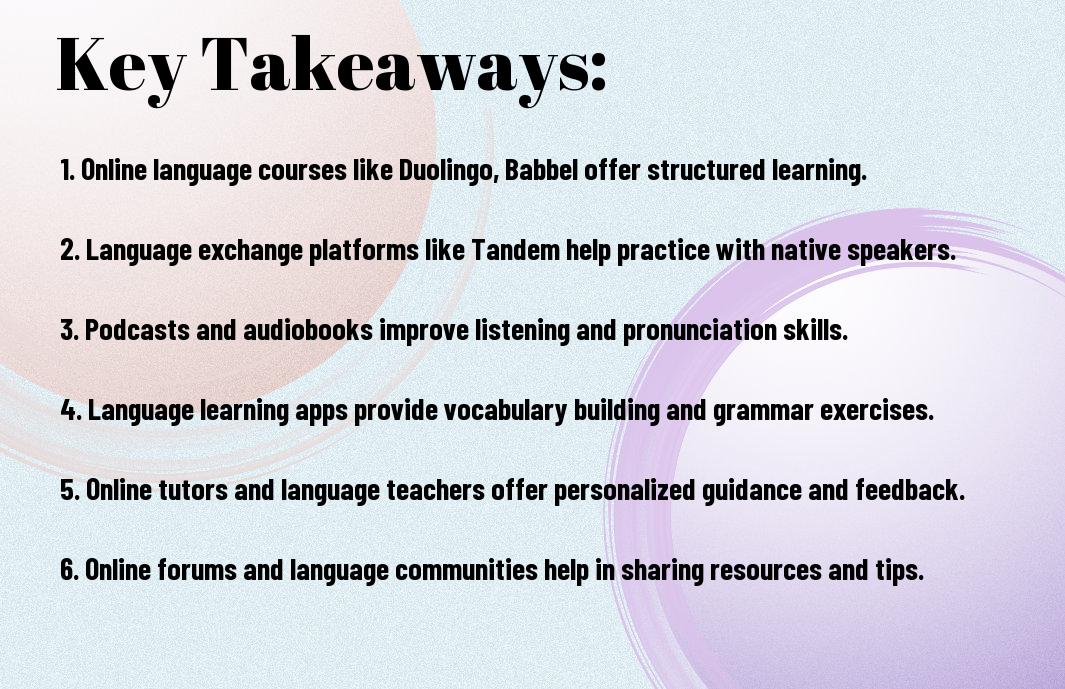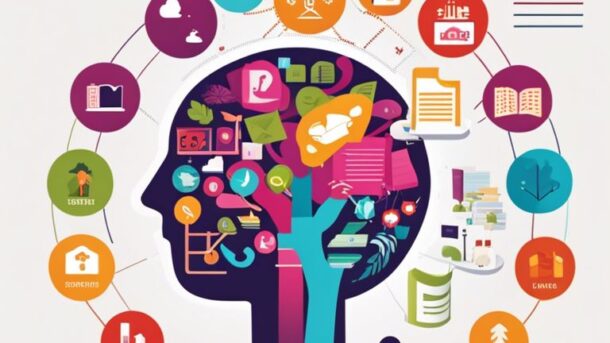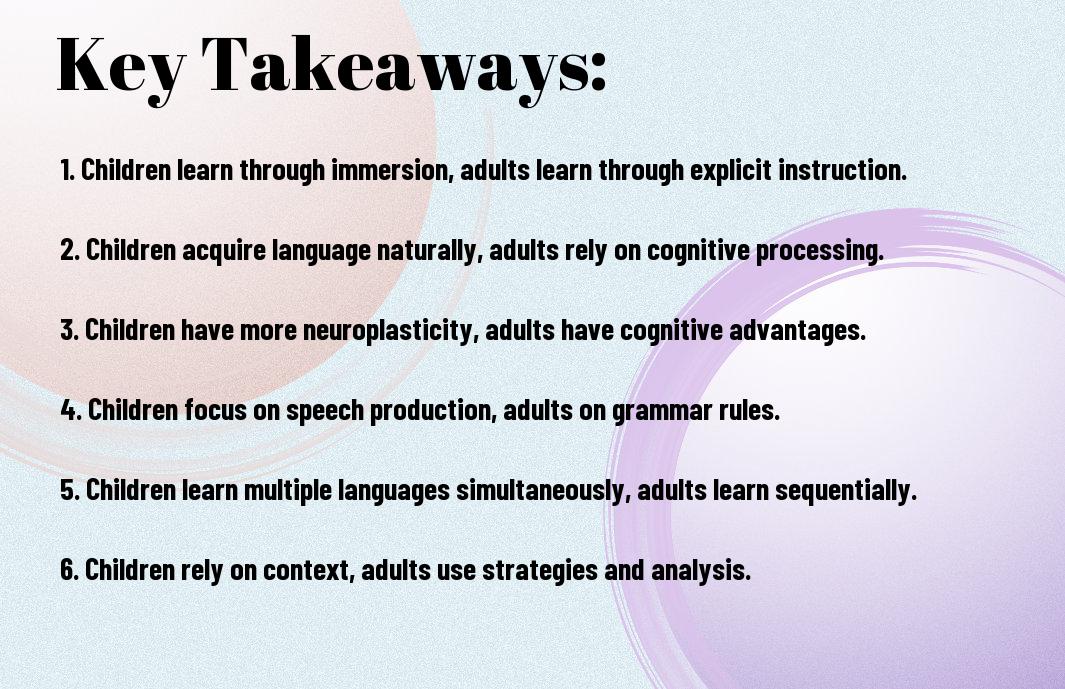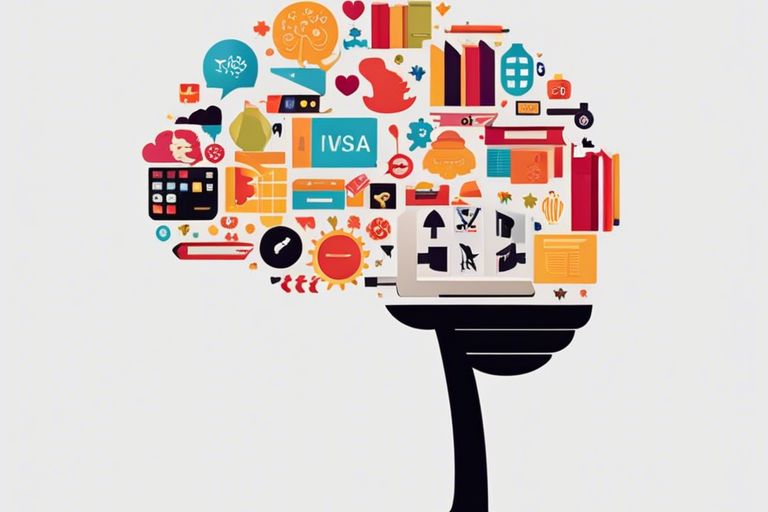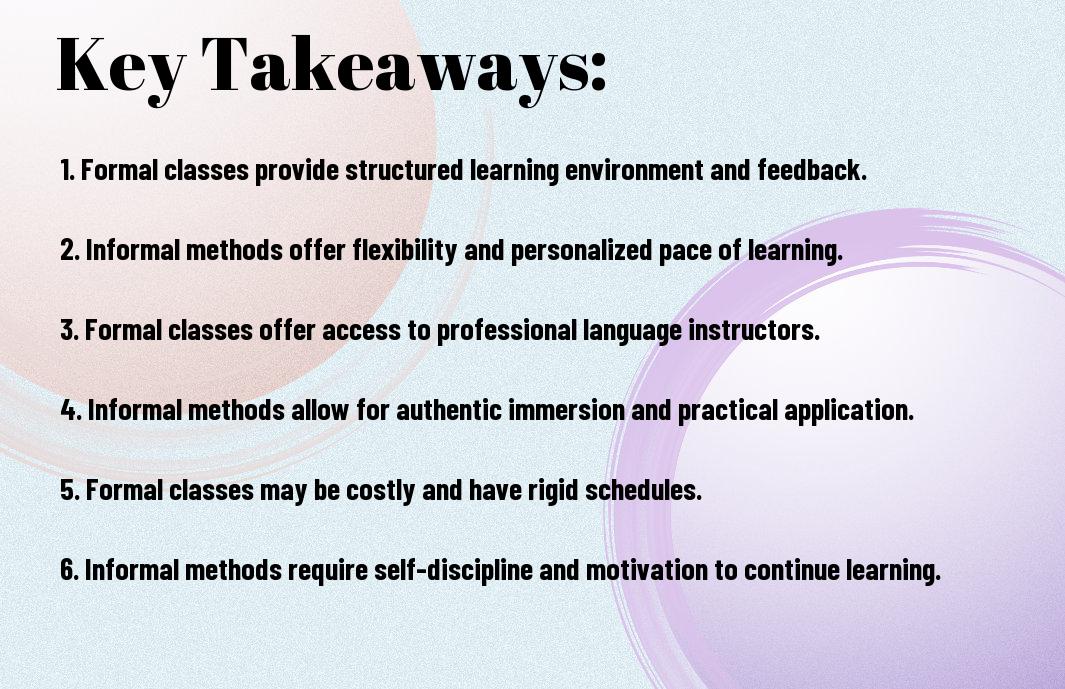As you initiate on your language learning journey, you’ll discover that your learning materials extend far beyond textbooks and language learning apps. You can leverage your favorite movies and TV shows to improve your language skills, exposing yourself to native speakers, accents, and conversational dialogue. By doing so, you’ll enhance your listening and speaking abilities, and gain a deeper understanding of your target language and its cultural context, making your learning experience more engaging and effective.
Key Takeaways:
- The authenticity of movies and TV shows makes them an excellent resource for language learners, as they provide a realistic representation of how people communicate in everyday life.
- Watching movies and TV shows with subtitles can improve vocabulary and listening skills, as learners can see the words and phrases being used in context.
- Cultural immersion is another benefit of using movies and TV shows for language learning, as they provide a window into the customs and traditions of the target language and culture.
- Movies and TV shows can also help learners develop their pronunciation and intonation skills, as they can mimic the speech patterns and accent of native speakers.
- Using movies and TV shows as a supplement to traditional language learning methods can make the learning process more engaging and enjoyable, increasing motivation and retention of new language skills.
The Power of Visual Aids
Before delving into the specifics, you’ll find that visual aids like movies and TV shows play a significant role in language learning, making it more engaging and effective for you.
Subtitles and Captions
With the help of subtitles and captions, you can improve your reading and listening skills simultaneously, allowing you to follow the dialogue and storyline more easily.
Authentic Dialogue and Accents
Similarly, captions provide you with the opportunity to hear authentic dialogue and accents, exposing you to the natural flow of the language.
In fact, as you watch movies and TV shows, you’ll be able to pick up on idiomatic expressions, slang, and colloquialisms that are often used in everyday conversations, helping you to sound more natural and fluent in your language learning journey, and you’ll find that your comprehension and pronunciation improve significantly over time.
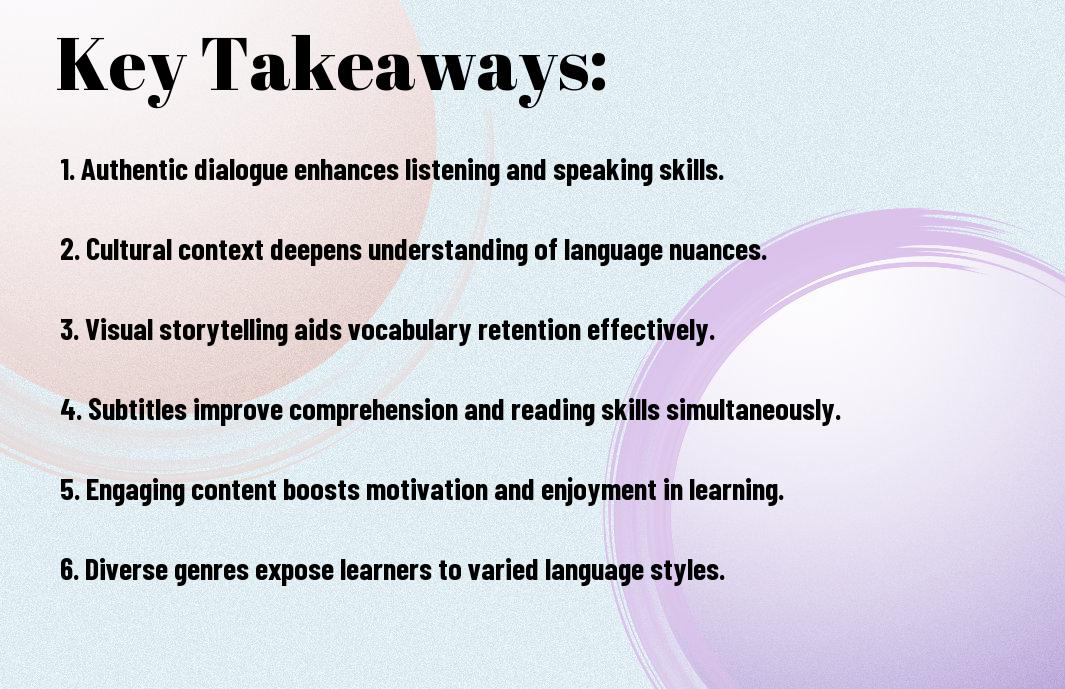
Cultural Immersion
Clearly, watching movies and TV shows in the target language can provide you with a unique opportunity to immerse yourself in the culture. You can gain a deeper understanding of the customs, traditions, and ways of life of the native speakers.
Exposure to Idioms and Colloquialisms
Contrary to what you might think, exposure to idioms and colloquialisms through movies and TV shows can help you sound more natural and fluent in the target language. You will be able to pick up phrases and expressions that are commonly used in everyday conversations.
Insights into Social Norms and Values
Valuably, you can gain insights into social norms and values by observing how characters interact with each other in movies and TV shows. You will be able to understand what is considered polite, respectful, and appropriate in different social situations.
Immersion in the culture through movies and TV shows can also help you navigate complex social situations and avoid unintentionally offending someone. As you watch your favorite shows, you can observe how characters greet each other, use body language, and engage in conversations, which can help you develop your own social skills and adapt to the culture more easily. You can apply these insights to your own interactions with native speakers, making your language learning experience more authentic and effective.
Language Patterns and Reinforcement
After watching movies and TV shows, you will start to notice patterns in language use, such as grammar, vocabulary, and pronunciation, which can help you improve your language skills.
Repetition and Memorization
Any exposure to authentic language use can help you memorize new words and phrases, and repetition is key to language learning, as you will be able to practice your listening and speaking skills.
Contextual Learning and Application
An important aspect of language learning is applying language in context, and movies and TV shows provide you with the opportunity to see how language is used in real-life situations, making it easier for you to understand and use language effectively.
This type of learning allows you to develop your ability to comprehend and communicate in your target language, as you will be able to learn idiomatic expressions, colloquialisms, and cultural references that are often difficult to learn from textbooks alone, and you will be able to apply them in your own conversations, making your language skills more authentic and natural.
Overcoming Language Barriers
Many language learners face difficulties when trying to overcome language barriers, but with the help of movies and TV shows, you can improve your skills. You can learn more about How Language Learning with TV Will Lead to Fluency! and discover new ways to enhance your language abilities.
Improved Listening and Speaking Skills
By watching TV shows and movies in the target language, you can improve your listening and speaking skills, as you’ll be exposed to different accents, tones, and speaking styles, helping you to better understand and mimic native speakers.
Enhanced Vocabulary and Pronunciation
Between the lines of dialogue and the context of each scene, you’ll pick up new words, phrases, and expressions, expanding your vocabulary and improving your pronunciation, which will help you to communicate more effectively in your target language.
A significant advantage of learning through movies and TV shows is that you’ll be able to learn vocabulary in context, which will help you to understand how to use words and phrases in different situations, making your language learning more effective and enjoyable, and enabling you to express yourself more confidently and accurately.
Choosing Appropriate Content
Unlike other language learning methods, watching movies and TV shows can be an enjoyable way to learn a new language. You can find tips on how to use movies and TV to practice your language skills, making the experience even more effective.
Selecting Shows and Movies by Language Level
Betwixt the various options available, you need to select content that matches your language level to avoid frustration and maximize learning. You should opt for shows and movies with subtitles in your native language or the language you are learning.
Considering Genres and Interests
One of the key factors in choosing the right content is considering your personal interests and genres you enjoy. You will be more motivated to watch and learn from content that aligns with your hobbies or favorite topics.
Content that resonates with your interests will not only make the learning process more enjoyable but also help you stay engaged and retain information better. You can explore different genres, such as comedy, drama, or documentary, to find what works best for your language learning journey, making it a more personalized and effective experience.

Integrating Media into Language Curriculum
Now that you have considered the benefits of using movies and TV shows in language learning, it’s time to think about how to effectively integrate media into your curriculum. You can use media to supplement your teaching, providing students with engaging and interactive learning experiences.
Classroom Activities and Discussions
About to create a rich learning environment, you will find that media can be a valuable tool, allowing you to design activities and discussions that promote language skills and cultural understanding, helping you to assess your students’ progress.
Homework and Project Ideas
Above all, assigning homework and projects related to the media you’ve used in class can help reinforce language skills, and you will find that it encourages students to think creatively about the material they’ve covered.
Activities such as writing reviews, creating dialogues, or making videos can help you assess your students’ language proficiency, and as you design these assignments, you can tailor them to meet the needs and interests of your students, allowing you to track their progress and adjust your teaching accordingly.
To wrap up
Now, as you reflect on the impact of movies and TV shows on language learning, you can see how they enhance your understanding and pronunciation. You can leverage this medium to improve your language skills by watching shows in the target language. For more information, visit English Through Films and TV Shows: Benefits of Learning to discover how you can maximize your language learning experience.
FAQ
Q: What is the impact of watching movies and TV shows on language learning?
A: Watching movies and TV shows can have a significant effect on language learning. It exposes learners to authentic language usage, diverse accents, and various speaking styles, which can improve listening and speaking skills. Additionally, it provides context to new vocabulary and grammatical structures, making them more memorable and easier to understand. This immersive experience can also foster cultural awareness and understanding, which is an crucial aspect of language acquisition.
Q: How can movies and TV shows be effectively used as a language learning tool?
A: To use movies and TV shows as a language learning tool, learners can start by choosing content that matches their language level and interests. They can begin with subtitles in their native language and gradually switch to subtitles in the target language. Pausing the video to look up unknown words, repeating phrases out loud, and summarizing the plot in their own words can enhance the learning experience. Furthermore, discussing the content with others, either in person or online, can provide opportunities for practicing speaking and writing skills.
Q: Are there any specific movie or TV show genres that are more beneficial for language learning than others?
A: While any genre can be useful for language learning, some may be more beneficial than others depending on the learner’s goals and preferences. For example, sitcoms and comedies often feature everyday conversations and slang, which can be helpful for improving informal language skills. Dramas and historical series, on the other hand, may provide more formal language and complex vocabulary. Documentaries can offer a wide range of topics and formal language, making them suitable for learners interested in specific subjects or academic language. Ultimately, the most effective genre is one that keeps the learner engaged and motivated to continue learning.

